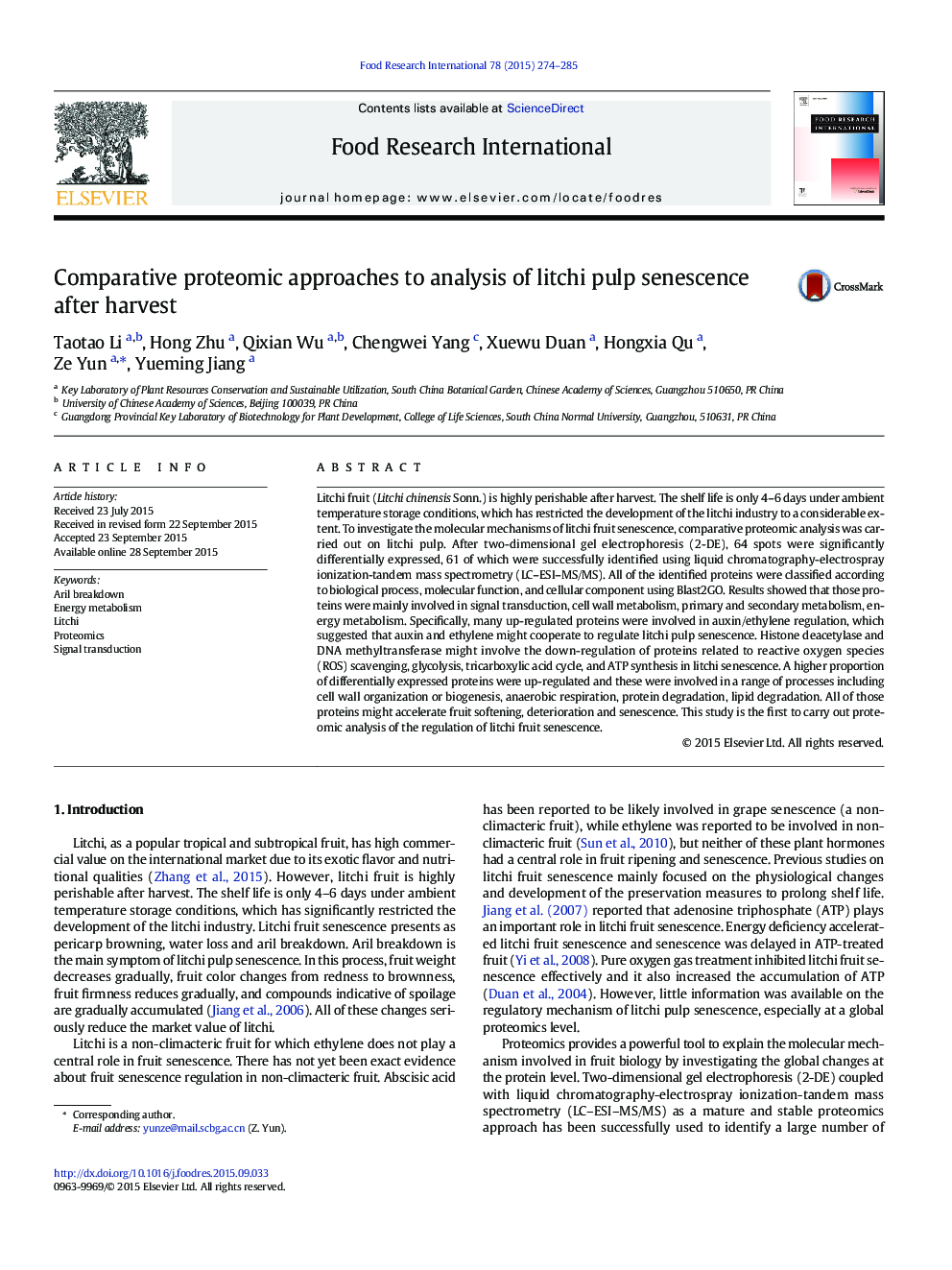| Article ID | Journal | Published Year | Pages | File Type |
|---|---|---|---|---|
| 4561319 | Food Research International | 2015 | 12 Pages |
•Comparative proteome was used in the mechanism analysis of litchi fruit senescence.•Auxin and ethylene signaling might be synergistic in the regulation of litchi aril breakdown process.•Cell wall degraded significantly in postharvest litchi fruit senescence.•Energy deficiency induced litchi fruit senescence.
Litchi fruit (Litchi chinensis Sonn.) is highly perishable after harvest. The shelf life is only 4–6 days under ambient temperature storage conditions, which has restricted the development of the litchi industry to a considerable extent. To investigate the molecular mechanisms of litchi fruit senescence, comparative proteomic analysis was carried out on litchi pulp. After two-dimensional gel electrophoresis (2-DE), 64 spots were significantly differentially expressed, 61 of which were successfully identified using liquid chromatography-electrospray ionization-tandem mass spectrometry (LC–ESI–MS/MS). All of the identified proteins were classified according to biological process, molecular function, and cellular component using Blast2GO. Results showed that those proteins were mainly involved in signal transduction, cell wall metabolism, primary and secondary metabolism, energy metabolism. Specifically, many up-regulated proteins were involved in auxin/ethylene regulation, which suggested that auxin and ethylene might cooperate to regulate litchi pulp senescence. Histone deacetylase and DNA methyltransferase might involve the down-regulation of proteins related to reactive oxygen species (ROS) scavenging, glycolysis, tricarboxylic acid cycle, and ATP synthesis in litchi senescence. A higher proportion of differentially expressed proteins were up-regulated and these were involved in a range of processes including cell wall organization or biogenesis, anaerobic respiration, protein degradation, lipid degradation. All of those proteins might accelerate fruit softening, deterioration and senescence. This study is the first to carry out proteomic analysis of the regulation of litchi fruit senescence.
